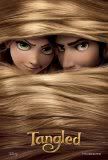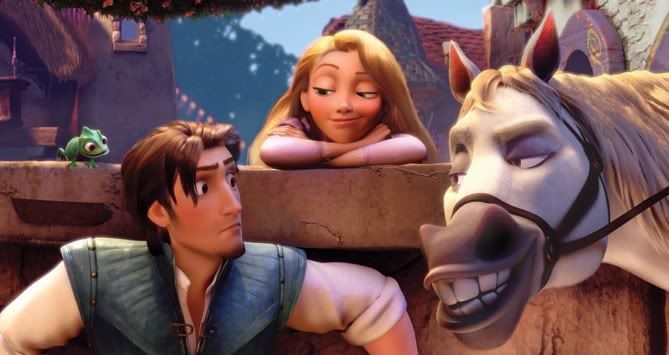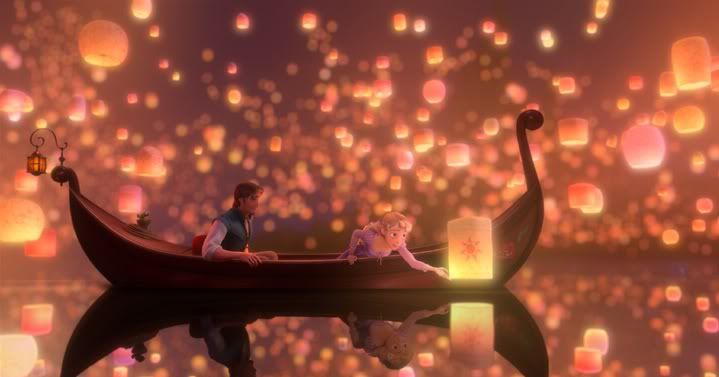We spent considerable time watching movies this past holiday season, either in the theater or at home. I don't have time to write individual critiques and some might find it interesting to learn what my family watches.
A couple of caveats: with the exception of DD#2 who is 16, my "children" are adults. My antennae are not quite so finely tuned to the occasional swear word (although overuse of the "f-bomb" bothers me) or sexual situation.
Plot holes to big to ignore, however, are another story...
Avatar: DD#1 summed this movie up nicely--Pocahontas with aliens. Only Pocahontas had better songs.
The graphics were stunning. The acting, with the exception of Sigourney Weaver when she was being a diva of a xenobiologist, was serviceable considering the characters were little more than one-dimensional. At one point during his impassioned soliloquy, I fully expected the hero to yell, "They may take our planet, but they will never take OUR FREEDOM!"
How bad was the story and the acting? When the xenobiologist dies, I didn't cry. Throughout the entire movie, while I marveled at the vision and the special effects, I kept thinking, "Imagine what Ursula K. LeGuin (whose father, Alfred Krober, earned the first Ph.D. in anthropology in the U.S. and founded the department of anthropology at Cal) could do with this!" I rather wish James Cameron had decided to forgo the story all together and just made a film about Pandora and the indigenous population, the Na'vi. An xenopological study, as it were. Ms. LeGuin did that with one of her books, which included a cassette tape of the "natives" playing their songs.
The rest of the family was able to overlook the lack of story and was blown away by the effects. We had several discussions on the importance of story and plot, believability, and internal consistency in fantasy and science fiction.
On the March Hare scale: 2.5 out of 5 Golden Tickets. Go for the razzle dazzle, so spend the bucks to see it in 3D IMAX. Go to the bathroom before the film starts; it's a long one. Definitely not for younger children or those who are sensitive to loud sounds and violent action.
The Princess and the Frog: Hubs was off with the older kids, so I took DD#2 to this one. I've been curious about Disney's "return to classic animation" since Hubs & I went to Disneyland this summer and saw the trailers.
I was impressed. The Disney magic is definitely there and the twist on the old story is clever and well-done.
Set in 1920's New Orleans, there is food and music and lush scenery everywhere. The heroine is Tiana, a young African-American (Creole?) girl whose mother sews for a white family. The daughter of the white family, Charlotte (or Lottie), loves princesses and the movie opens with Tiana and Lottie listening raptly while Tiana's mother reads the story of the frog prince while she finishes the latest princess gown for Lottie.
Historically accurate relationships between blacks and whites are ignored. Lottie's father, The Colonel, treats Tiana's mother respectfully. On the trolley home, Tiana and her mother sit in the middle of the car. They live in a modest home and there is a hard-working dad who comes in just after they do. Dad is proud of his daughter's precocious cooking skills and invites the neighbors over when she makes gumbo. His dream is to open a restaurant, called "Tiana's Place", and he shares that with his daughter. And while she may wish upon a star, like Lottie does, her parents remind her that success takes hard work.
Work she does, two jobs as a waitress, carefully saving her tips in coffee cans so she can put a payment down on the old sugar mill that she wants to convert to a restaurant. Meanwhile, Lottie is looking forward to the arrival of a Prince and the chance to become a "real" princess.
The Prince loves jazz and parties and hates to work.
There is voodoo, a gator whose ambition is to play jazz with Louis Armstrong, a Cajun firefly, an old blind "Mama" in bijou with mysterious powers. There is music--I especially liked the zydeco number. But while there is black magic and white magic afoot, the message about working hard to achieve your dreams and the satisfaction it brings is always present. Along with messages about the importance of love and family. No fairy godmother magically resolves our heroine's problems: she does the heavy lifting herself, with help from her friends. Oh--the Prince learns a few lessons, too. But DS#2 would definitely categorize this as a "girl film" based on the system he set up when he was four or five.
There was plenty of wit and humor in the dialog to keep the adults in the audience entertained. DD#2 enjoyed it as well.
On the March Hare scale: 4.5 out of 5 Golden Tickets
Sherlock Holmes: Honestly, with eye candy like Robert Downey, Jr., and Jude Law as Mr. Holmes and Dr. Watson, even if this movie was horrid, I'd still want to see it.
I read my first Sherlock Holmes story when I was ten and was hooked immediately. I've read the canon as well as some of the "undiscovered" stories, like The Seven Percent Solution. I don't have quite the same familiarity with the movie version, although I've seen several.
But I have to say I thoroughly enjoyed this version. Robert Downey, Jr., is definitely too short and stocky and Jude Law is too thin, but they captured the essence of their characters. The movie takes place after Holmes and Watson have become a team; in fact, Watson is moving out as he plans to marry his Mary Morstan (Kelly Reilly). And Irene Adler (Rachel McAdams) shows up with barely an introduction--you have to listen as clues about who she is and her importance to Holmes are dropped throughout the movie. (Unless, of course, you've read the stories.)
But this story is not based on any of the stories of the canon, although it uses details from many of them. Someone is killing prostitutes and Sherlock Holmes is on the trail, which leads to a secret society and Lord Blackwood (Mark Strong). He is convicted and before his death, he asks to see Holmes. He tells Holmes that three more will die. The next day Blackwood is hanged and Dr. Watson pronounces him dead.
The next day, the groundskeeper of the cemetery swears he saw Lord Blackwood walk out of his grave. Holmes and Watson are called in to investigate. As the investigation continues, we also see the relationship between Holmes and Watson and how dependent Holmes is on Watson to keep him grounded and how Watson relishes the excitement Holmes brings to his otherwise conventional life.
Dr. Watson walks with a limp, keeping with his injury in the Afghan wars. Holmes has no use for social graces or conventions; he seems to enjoy insulting everyone he works with, even Watson. True to form, Holmes's knowledge is eclectic, encompassing esoteric poisons, botany, chemistry, biology, and music. He is a master of observation and of disguise. He smokes a pipe, though not a meerschaum, and he wears hats, though not a deerstalker cap. Watson is no intellectual slouch, either, having learned much while accompanying Holmes on his "adventures."
I thought the director, Guy Ritchie, did a terrific job recreating Victorian London through the judicious use of CGI as well as capturing the spirit of Sherlock Holmes without slavishly recreating him. Purists may disagree.
Hubs enjoyed it--there was plenty of action and he was able to follow it, although he is not as familiar with the Holmes-verse as I am. DD#2 also enjoyed it; DS#2 was the only one who thought it was just "okay."
I wish Mr. Ritchie, Mr. Downey, and Mr. Law return for another romp. (I hope Ms. McAdams does, too.) However, I don't think Sherlock Holmes will bring the kind of revenue or buzz to encourage a second one. Plus, Mr. Downey is in the midst of a multi-series, Iron Man, and he may not be eager to commit to another. Too bad--I enjoyed the clever story and the witty dialog.
On the March Hare scale: 4 out of 5 Golden Tickets.
Julie & Julia: DD#2 and I came home and later that night ordered this movie from the Comcast On Demand menu. The movie is based on the experiences of Julie Powell (Amy Adams), a mid-level government employee dealing with the aftermath of 9/11, and Julia Child (an amazing Meryl Streep), the wife of a diplomat assigned to Paris who finds herself at loose ends. Their stories intersect when Julie decides she is going to write a blog as she cooks her way through all the recipes in Julia Child's, Mastering the Art of French Cooking. As Julie blogs, the movie cuts to Julia Child's life in France (and beyond). After taking classes in hat making and bridge, Paul Child (Stanley Tucci) asks Julia what she likes to do. She replies, "I like food. I like to eat!" Her first day at the famed Cordon Bleu was less than successful. The class, Julia carefully explains, is too basic. She wants the more difficult class. That class, she is told, is for professional cooks, is all men, and is very expensive. No problem to Julia, who finds herself in the class, but behind in some very basic skills. Undeterred, Julia practices and perseveres.
Julie, too, perseveres. Her blog begins to gain readers other than her mother. Suddenly this isn't just a small thing she is doing--her goal and her blog are dominating her life, causing stress instead of relieving it.
Both Julie and Julia have supportive husbands. There are several small scenes where Julia and Paul show their shared grief over their inability to have children. Julie and Eric Powell (Eric Messina) have a rockier relationship--Julie is a drama queen and a bit neurotic and Eric puts up with her histronics patiently (for the most part).
Meryl Streep does an amazing job capturing Julia Child's voice and her physical presence. DD#2 commented how annoying it was and I told her that was how I remembered it. She was also a pioneer: the first woman to graduate from the Cordon Bleu, writing a cookbook making French cooking accessible to American women (which took eight years and while living in a different city, then country from her co-authors), then bringing cooking instruction--live!--to American T.V.
Amy Grant makes Julie Powell cute and endearing and plays some of her foibles for laughs. There is a gratuitous slam against "Republicans" by Julie's boss (as well as a scene where Paul Child is questioned by a Congressional committee about his time while serving in the OSS in China during WWII); otherwise this movie is really about food, finding your passion, and the amazing places that can lead.
This movie is also available on DVD.
On the March Hare scale: 4.5 out of 5. Made me want to get my own copy of Mastering the Art of French Cooking and trying out the recipes. But then I had a drink and came to my senses. :)




















